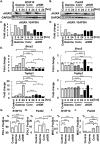Ultra-high dose rate (FLASH) carbon ion irradiation inhibited immune suppressive protein expression on Pan02 cell line
- PMID: 39724928
- PMCID: PMC11753840
- DOI: 10.1093/jrr/rrae091
Ultra-high dose rate (FLASH) carbon ion irradiation inhibited immune suppressive protein expression on Pan02 cell line
Abstract
Recently, ultra-high dose rate (> 40 Gy/s, uHDR; FLASH) radiation therapy (RT) has attracted interest, because the FLASH effect that is, while a cell-killing effect on cancer cells remains, the damage to normal tissue could be spared has been reported. This study aimed to compare the immune-related protein expression on cancer cells after γ-ray, conventionally used dose rate (Conv) carbon ion (C-ion), and uHDR C-ion. B16F10 murine melanoma and Pan02 murine pancreas cancer were irradiated with γ-ray at Osaka University and with C-ion at Osaka HIMAK. The dose rates at 1.16 Gy/s for Conv and 380 Gy/s for uHDR irradiation. The expressed calreticulin (CRT), major histocompatibility complex class (MHC)-I, and programmed cell death 1 ligand (PD-L1) were evaluated by flow cytometry. Western blotting and PCR were utilized to evaluate endoplasmic reticulum (ER) stress, DNA damage, and its repair pathway. CRT, MHC-I on B16F10 was also increased by irradiation, while only C-ion increased MHC-I on Pan02. Notably, PD-L1 on B16F10 was increased after irradiation with both γ-ray and C-ion, while uHDR C-ion suppressed the expression of PD-L1 on Pan02. The present study indicated that uHDR C-ion has a different impact on the repair pathway of DNA damage and ER than the Conv C-ion. This is the first study to show the immune-related protein expressions on cancer cells after uHDR C-ion irradiation.
Keywords: FLASH; PD-L1; calreticulin (CRT); carbon ion beam; ultra-high dose rate.
© The Author(s) 2024. Published by Oxford University Press on behalf of The Japanese Radiation Research Society and Japanese Society for Radiation Oncology.
Conflict of interest statement
There are no conflicts of interest.
Figures


Similar articles
-
The Appropriate Conditions for the Cell Sparing (FLASH) Effect Exist in Ultra-high Dose Rate Carbon Ion Irradiation.Anticancer Res. 2025 Mar;45(3):955-963. doi: 10.21873/anticanres.17483. Anticancer Res. 2025. PMID: 40037869
-
Comparison of Tumor Control and Skin Damage in a Mouse Model after Ultra-High Dose Rate Irradiation and Conventional Irradiation.Radiat Res. 2023 Sep 1;200(3):223-231. doi: 10.1667/RADE-23-00057. Radiat Res. 2023. PMID: 37590482 Free PMC article.
-
Proton FLASH Irradiation Using a Synchrotron Accelerator: Differences by Irradiation Positions.Int J Radiat Oncol Biol Phys. 2025 Apr 1;121(5):1293-1302. doi: 10.1016/j.ijrobp.2024.11.066. Epub 2024 Nov 15. Int J Radiat Oncol Biol Phys. 2025. PMID: 39549758
-
FLASH Radiotherapy: What Can FLASH's Ultra High Dose Rate Offer to the Treatment of Patients With Sarcoma?Semin Radiat Oncol. 2024 Apr;34(2):218-228. doi: 10.1016/j.semradonc.2024.02.001. Semin Radiat Oncol. 2024. PMID: 38508786 Review.
-
Towards clinical application of ultra-high dose rate radiotherapy and the FLASH effect: Challenges and current status.Cancer Radiother. 2024 Oct;28(5):463-473. doi: 10.1016/j.canrad.2024.07.001. Epub 2024 Sep 19. Cancer Radiother. 2024. PMID: 39304401 Review.
References
MeSH terms
Substances
Grants and funding
LinkOut - more resources
Full Text Sources
Research Materials

